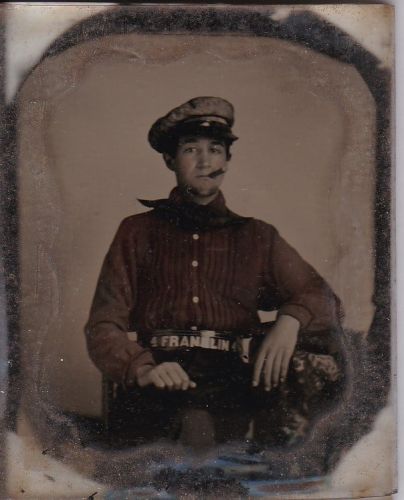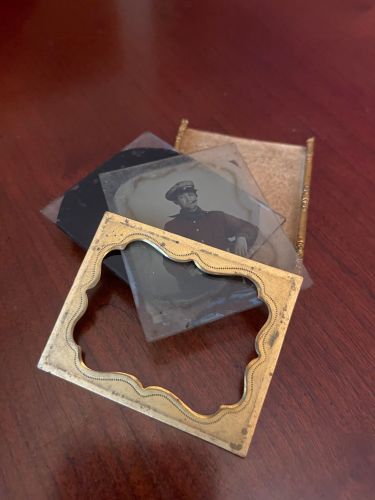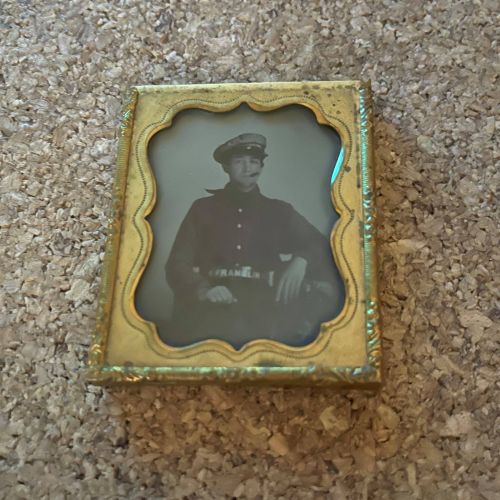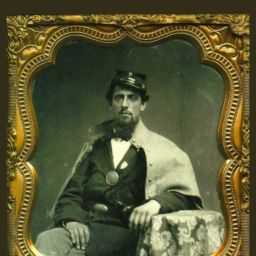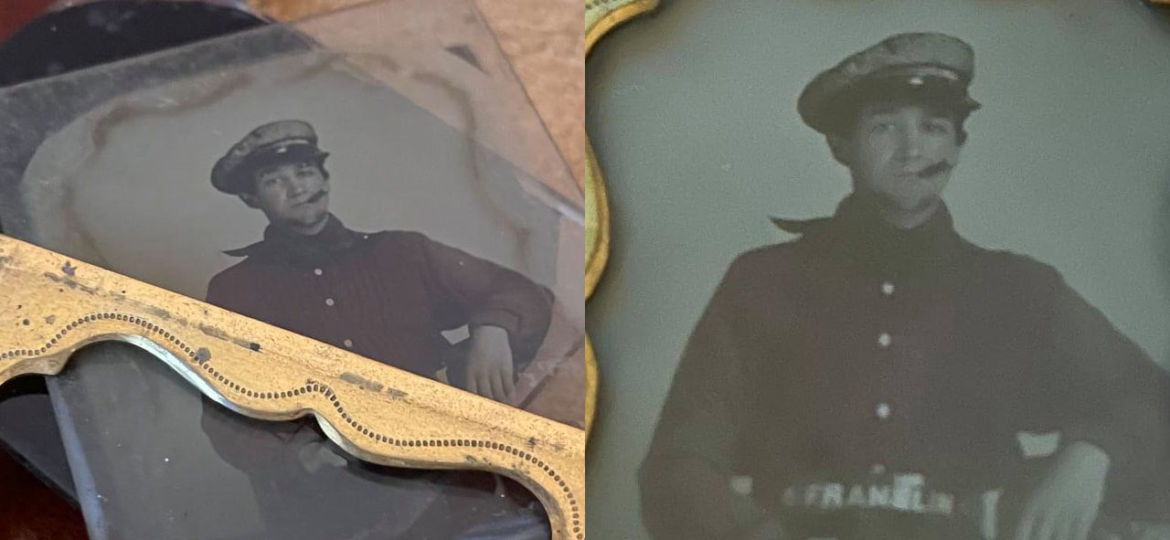
New Haven, Connecticut. Please contact me if you can provide any informed conjecture or observation about the glass plate photo shown featured here., whether it is about the sitter’s clothing, the “4 Franklin 4” on his belt, approximate year of the photo, whether it is wet or dry glass plate photography, etc.
Other views of the photograph are below.
I can be reached at scott-at-grantrevealed.com or via the @GrantRevealed Instagram or @GrantRevealed Twitter accounts.
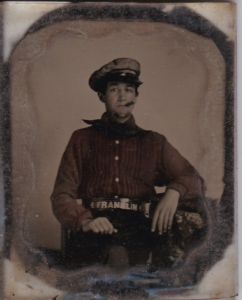
After a friend’s passing a few years ago, I came into possession of a few vintage family photographs and pencil sketches that he owned that had formerly belonged to Ruth A. Sprague (1899–1988), a friend of his who’d been a resident of New Haven, CT.
By far the oldest of the photos is this glass plate one, which is the only glass plate photo among them, showing an unknown young man in a jaunty pose with a neck bandana, cigar, and cap with a bill.
I recall from my friend that Ruth was a lifelong New Haven resident, so it is possible that the photo has a New Haven or at least Connecticut connection. Might the sitter be serving on a commercial ship named Franklin? Or might “4 Franklin” be a fire station designation?
The photo is from the 1850s–1880s. The collodion wet plate process of photography was invented by Frederick Scoff Archer in the 1850s. Silver gelatin dry plate photography was created by Dr. Richard L. Maddox in the 1870s.
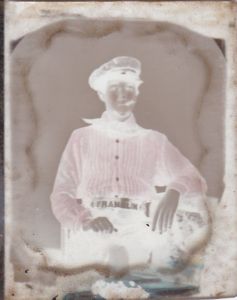
If you possess glass plate photos (also known as negative plate photos), be aware that the ideal storage environment is “less than 65º Fahrenheit with minimal fluctuation (+/- 2 degrees), and an ideal relative humidity is 30% RH with minimal fluctuation (+/-3 percent).” Plates should not be stacked. Each plate should be kept in an appropriately sized four-flat envelope (Herskovitz). You can purchase such envelopes online—(e.g., available at Printfile.com).
SOURCES
CBSNews.com. “Photography’s era of glass plate negatives.” October 12, 2016. https://www.cbsnews.com/news/photographys-era-of-glass-plate-negatives/.
Herskovitz, R. “Tech talk: Glass Plate Negatives.” Minnesota Historical Society, July 1999. PDF. https://www.mnhs.org/sites/default/files/lhs/techtalk/techtalkjuly1999.pdf.


